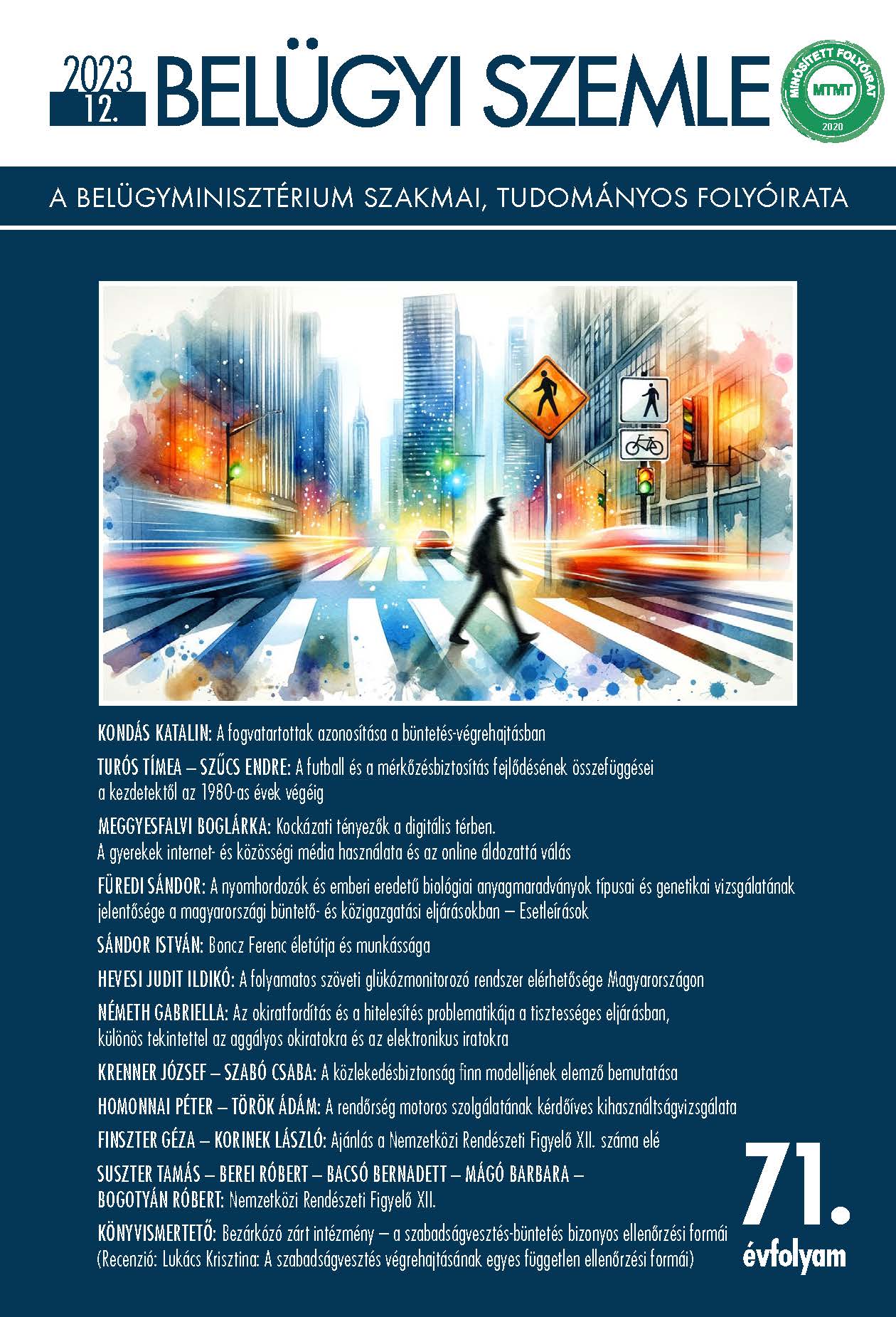Abstract
The police motorcycle service has a history of almost 100 years, the beginnings of which go back to the mid-1920s, to the Horthy era. The turbulent history has halted its development several times, despite this it can be said to be continuous.
In terms of its personnel, it reached its peak in the 1990s, and from the technical side, it has shown dynamic, targeted and powerful development since 2017. Depending on this, the successful implementation of service task systems depends
on whether the training development can keep up with technical development, or whether it can show system-oriented results in task execution.
Aim: The aim of the study is to examine the utilisation of the personnel of the Police authorised to drive a service motorcycle with a distinguishing mark, to determine their primary duties and the seasonal mileage.
Methodology: Questionnaire survey among motorcycle police officers who applied for the license renewal training program of the Police Education and Training Centre in 2022.
Findings: From the aggregated data, it can be established that the average annual mileage of 218 national employees on service motorcycles is 3,599 kilometres. The patrol category belonging to the primary responsibilities has 104 people (patrol, patrol leader, patrol commander, group commander) significantly better, 6,589 kilometres/year, but the category belonging to the secondary responsibilities has 114 people (accident scene investigator and investigator, district
commissioner, service commander and management category) in total on average It travelled 2,266 kilometres in the year 2022.
Value: The findings of the survey highlight that the average mileage of the motorcycle police force is low. This is primarily due to the fact that more than 50% of the trainees do not have the primary task of performing tasks with a service
motorcycle. However, their high-quality implementation justifies the transformation of the training system and making it more efficient.

